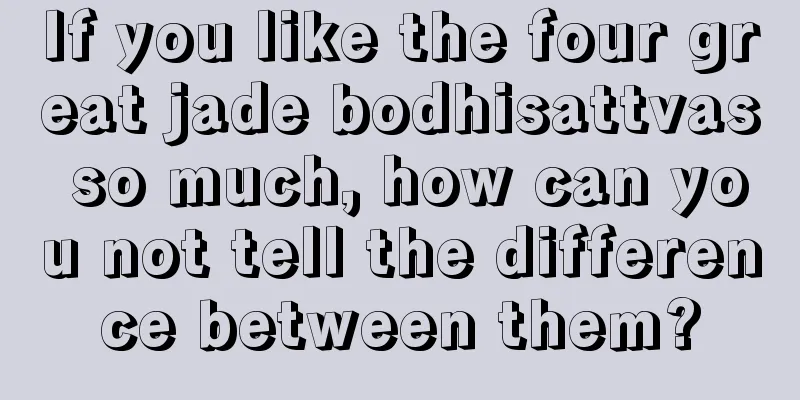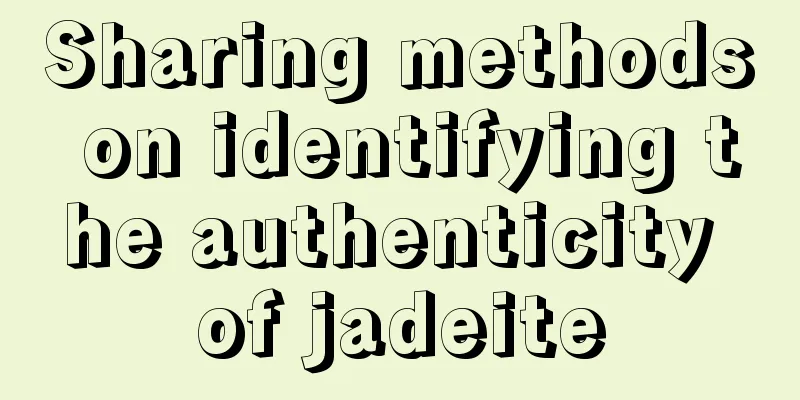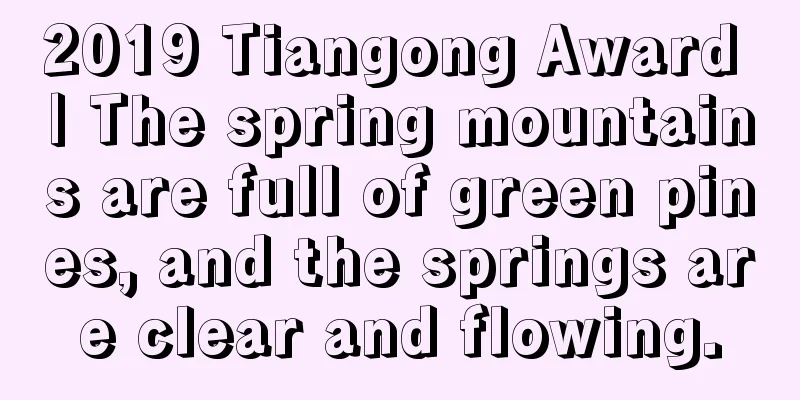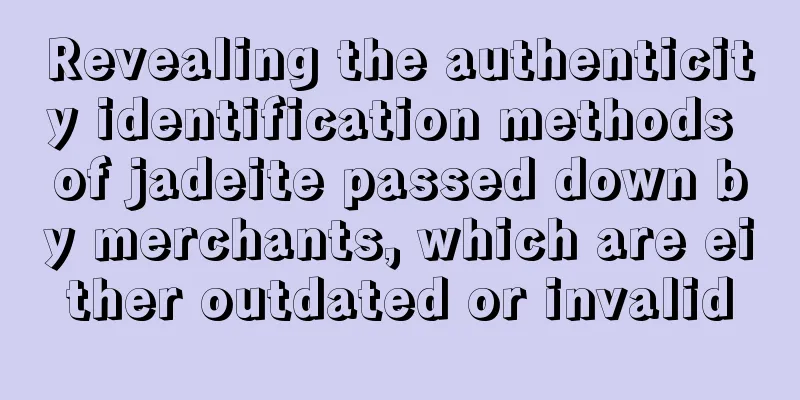If you like the four great jade bodhisattvas so much, how can you not tell the difference between them?

|
Buddhist jade carvings have always been popular among the public, especially jadeite Bodhisattvas. Bodhisattva is the abbreviation of "Bodhisattva". Tao sentient beings, awakened sentient beings, great awakened sentient beings, and Tao-hearted sentient beings, meaning those who seek the Tao and great awakening, and those who seek the Tao with a great heart. Wisdom, compassion, action and vows are the hallmarks of the four great Bodhisattvas in Mahayana Buddhism. Manjushri represents wisdom, Guanyin represents compassion, Samantabhadra represents action and Ksitigarbha represents vows . How do we distinguish the four great Bodhisattvas in jade carvings? 1. Manjusri BodhisattvaThe image of Manjushri Bodhisattva is usually holding a Ruyi in the left hand and a sword in the right hand. The Vajra sword can kill all demons, which is a metaphor for great wisdom being like a sharp sword that can cut off all ignorance and worries. He sits on a white lotus platform, which represents purity. Most jade carvings of Manjushri Bodhisattva are depicted riding a lion , with the lion's bravery and majesty frightening the demons and representing the Bodhisattva's wisdom and power. The boy's form symbolizes innocence and purity. 2. AvalokitesvaraThere are many manifestations of Avalokitesvara Bodhisattva among the people, so the Dharma instruments he holds are also very many. The Thousand-armed and Thousand-eyed Avalokitesvara has a Dharma instrument or hand seal on each hand, each of which represents the Bodhisattva's different methods of salvation. The most common willow branch in the pure bottle is one of the forty objects held by the Thousand-Armed Avalokitesvara. The pure bottle is for purification, and is filled with willow branch nectar, which can transform the heat and troubles of ordinary people into coolness, constantly comply with the wishes, and save all living beings. There are many kinds of mounts for Guanyin Bodhisattva, the most common ones are dragon, phoenix, turtle and lion . Among them, the lion is also called Wangtianhou and Chaotianhou. It is said to be the son of the Dragon King and has the habit of watching. The Dilong (also known as Chaotianhou) on the top of the Chinese pillar roars at the sky, which is regarded as conveying the will of heaven and the feelings of the people. 3. Samantabhadra BodhisattvaThe statue of Samantabhadra in the Wanshou Temple on Mount Emei is a representative Dharma image. Samantabhadra sits on a lotus platform carried by an elephant, holding a ruyi in his hand. The elephant has a white body, six tusks, and its four legs are standing on the lotus platform. The white elephant represents a sincere wish and tireless hard work; the six tusks represent the six paramitas - giving, keeping precepts, patience, diligence, meditation, and wisdom. Buddhism claims that the six-tusked white elephant is the incarnation of a bodhisattva to show its majesty and symbolize "great wishes and actions, and perfect merits." 4. Ksitigarbha BodhisattvaMost statues of Ksitigarbha Bodhisattva are of bald heads or monks wearing a Vairocana crown and robes. They hold a staff in one hand and a lotus in the other, or they hold a banner, a jewel, etc. The dragon body of Di Ting represents good luck and fortune, its tiger head represents wisdom and courage, and it goes forward bravely in the face of difficulties and never gives in. Its lion tail represents patience and ambition, and persistence is the key to victory in any endeavor. Its unicorn feet represent stability, and it represents being kind to others, living in harmony, and cherishing good deeds. The above are the image characteristics of the four great Bodhisattvas. In fact, based on the image and the mount, you can easily tell which Bodhisattva it is.
fcgc33 fcpf18 |
<<: Jade Appreciation | Jadeite "The Twelve Zodiac Guardian Buddhas" Jade Carving Series
>>: What is the difference between jadeite's rigidity and jadeite's luster?
Recommend
From stone to art! Jade carving
Jade carving is the process of transforming a pie...
The most practical analysis of jade market, a must-read for jade investment
There are two main types of Houjiang Stone. The f...
Why do people pursue jade? Where does the value of jadeite lie?
Jadeite, also known as jadeite jade, jadeite, and...
The charm of jade is everywhere, how can we learn to choose?
The charm of jade lies in its bright and rich gre...
What are the carving techniques for jade handles?
The carving of jade handles is an important facto...
When buying jade rings, you must know the pitfalls
Throughout the ages, rings have been considered a...
What to do if your jade bracelet breaks
People who wear jade bracelets are generally very...
What is porcelain jadeite? Why is porcelain-bottom jadeite said to have no value?
There are many professional terms in the jade ind...
The identification standards of the Jade ABC Institute are revealed. 4 methods to select jade and learn to accurately estimate its value
Jade is divided into three categories, namely, A,...
[Jade Appreciation] Revive the sleeping "stone"!
Jade is a beautiful jade that has been sleeping f...
Are jade brooches all made from scraps? So why is the value so high?
People with good taste know how important an exqu...
Jade is beautiful, but do you know its internal characteristics?
Generally speaking, we know that internal charact...
Appreciation▏Appreciate the beauty of ice purple jadeite
I have shared with you before about glass jadeite...
Use examples to illustrate how jade carving can achieve meaningful and auspicious meanings
A piece of jade will be carved into various diffe...
What types of jade are there and what are the carving crafts?
There are many types of jade products. Today, the...









